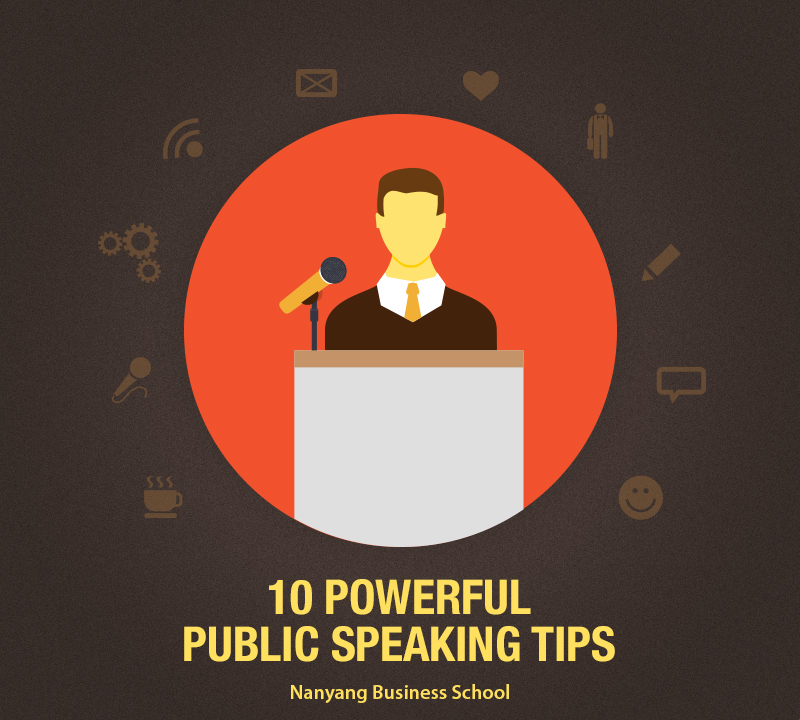Talking in front of a group of people doesn’t come naturally to many people. Still, introverted individuals who can be called shy can learn how to combat their fears. Public speaking is a vital part of being an industry leader. You need to know how to communicate and create an impact with your words.
Here a few pointers to guide you.
1. Let Your Passion Show
Speaking effectively about a topic requires you to understand the subject well. You cannot memorise facts and statistics and let that be your presentation. Passion is contagious, so you need to make your audience feel it too. Make sure you know what you are talking about. Care about it. Because if you don’t, they will figure it out and not be that interested either.
2. Adopt the Right Body Language
Non-verbal communication is important. That basically means that what you do with your hands and eyes and mouth and the rest of your body during your talk will determine how the audience responds to you. So maintain eye contact, smile enough but not too much, and don’t roll your eyes or keep fingering the long strands of hair that fall across your face. Sound professional and act professional.
3. Always Practice
Practice does make perfect. Read the speech out loud multiple times. Track how long it takes and leave time for Questions & Answers. Record it. Once you think you’ve got it down right, practice in front of somebody you trust to be honest with his/her opinion. Let them tell you what could be said better or emphasised more. Maybe your shoulders are slouching and you aren’t looking confident? Find out.
4. Be a Storyteller
Everybody prefers an engaging story to a long message delivered in monotone. Make your speech a story. Narrate the facts and figures with a personal touch. For example, you could throw in some anecdotes about the time you experienced something relevant and how it affected your feelings. Also add interesting bits of information that could be new learning for your audience.
5. Throw in Some Humour
You don’t want your audience sitting there with the same expression on their faces throughout your talk. Add some humour wherever appropriate. A good laugh always makes people feel good immediately and sharing a laugh can help you bond. Just make it relevant and clean.
6. Calm Your Nerves
Being nervous is a common problem before presentations until you get more regular at it. Choose some quick relaxation exercises that work for you. A yoga instructor or coach could advise you. And don’t let your nervousness make you speak differently – more quickly or trying to impress too hard. Aim to create a rapport with the audience members. People remember how you made them feel. So be comfortable and let that feeling pass on to them.
7. Use Voice Techniques
Voice therapy comes in handy for people who have issues such as a stammer or a high-pitched voice. A good speaker should sound pleasant and friendly. There are a few vocal exercises including energy, pitch inflection, pace and silence that can help you communicate effectively. Are you pausing when you should, to give the audience a moment to let a point sink in? Are you talking too fast? It’s important to know how you’re doing.
8. Focus on the Message
When you structure your speech, you need to keep the main message in mind. Losing focus can ruin your speech. Do your research beforehand to know more about your audience. Think of every possible scenario for the Q and A session. Even if somebody wants to drag you in another direction (away from the message) you should know how to bring the conversation back there.
9. Connect and Motivate
A good leader motivates his audience. To do that, you need to structure your talk to meet their needs and expectations. That requires research. Watch their body language when they speak to you. If you notice them looking confused or sceptical, what would you say? Your words, tone and gestures should work in a combination to make them want to get involved in the subject as soon as possible. Tell them what THEY can do instead of just telling them what has been done.
10. Respond Positively to Negative Feedback
Most speakers face resistance to their views. Listen to the audience member. Understand that he/she is very interested in what you have been talking about to have an opinion. Respond calmly and do not be defensive. Being neutral is the key. Remember the message that you are there to present and disagree without going off topic or getting flustered.
If you follow these tips from Day One, you’ll find yourself getting better and better. Great leaders are great communicators. Good luck!







